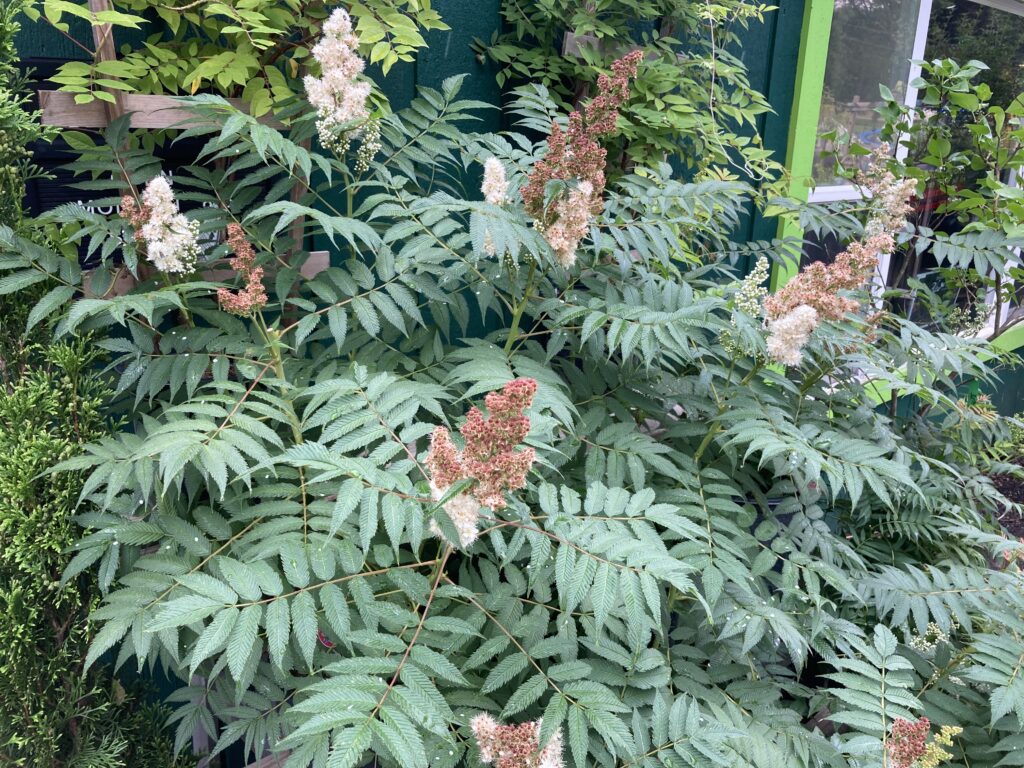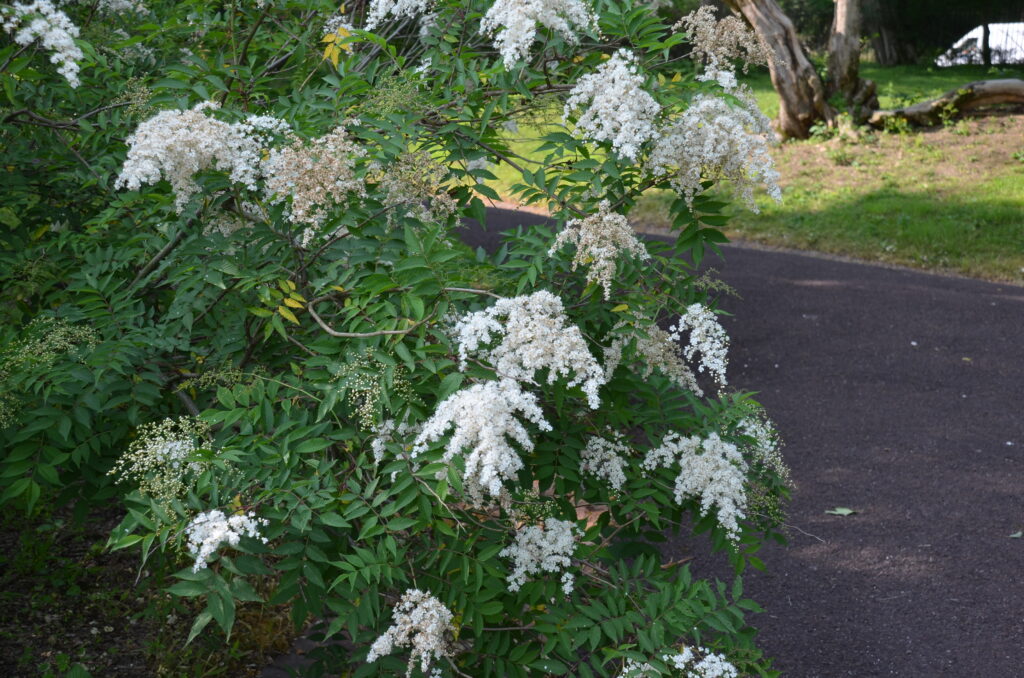
Ural false spirea (Sorbaria sorbifolia) is a vigorous suckering deciduous shrub. It typically grows 5-10 feet tall and wide depending on variety and soil quality. (USDA hardiness zones 2 -7). False spirea has coarse leaf textured foliage that resembles mountain ash (Sorbus sp.), hence the scientific name. It is listed in the rose (Roseacea) family.
Jungle-like is the best description of false spirea. In my travels I’ve seen plants inhabiting many zoos around the U.S. Its shoots are among the first to arise in spring. Dense, terminal, pyramidal panicles (to 10 inches long) of tiny white flowers begin to form. By late spring/early summer, fluffy clusters of white flowers sit atop the shrub and attract butterflies and other pollinators.

Foliage is at its eye-catching best through spring-summer seasons. The alternate, pinnately compound up to 12 inches long, with 12 to 25 leaflets, and each grow 4 inches long and 1 inch wide. Leaf margins are double serrated and pointed.
False spirea is an excellent option for vegetating difficult locations in a landscape. It’s very useful tool for erosion prevention. False spirea puts out runners that will colonize the area it’s planted in. Be aware how aggressive false spirea will grow. It’s really ideal for slopes and other areas that you don’t want to frequently manage, or parking lot beds.
False spirea grows in full or part sun and grows best in average, medium moisture, humus-rich, well-drained soils in full sun. Once established after its first year of planting, false spirea is drought tolerant and thrives in poor soil, acidic or alkaline, as long as they are adequately drained. Its foliage loses much of its pizzazz over an extended dry period.
To control its spread, take a sharp garden spade, plunge it into the soil to separate from the main plant, and pull them out. Little to no additional pruning is necessary. Prune in late winter to early spring by cutting back plants close to the ground to rejuvenate. No serious disease and insect pests trouble false spirea and it is not deer resistant.
Cultivars:
‘Sem’ is a small, compact selection with seasonal changes in leaf color. Spring’s fern-like foliage starts out pink to red, turns chartreuse with bronze tips, then solid green at the start of summer, leaves turn green later in summer, and finishes reddish in late fall.
Mr. Mustard™ according to PW has more colorful foliage than ‘Sem’ and grows shorter (2-3 feet tall and 3-4 feet wide). With seasonal foliage changes of chartreuse, pink and red. Flowering is secondary.
Cherry On Top™ (Bococot) from Bloomin’ Easy produces white plumes in summer, followed by red seed pods instead of the traditional dried brown seeds that persist through winter. Great food for birds!

 Posted in
Posted in 
